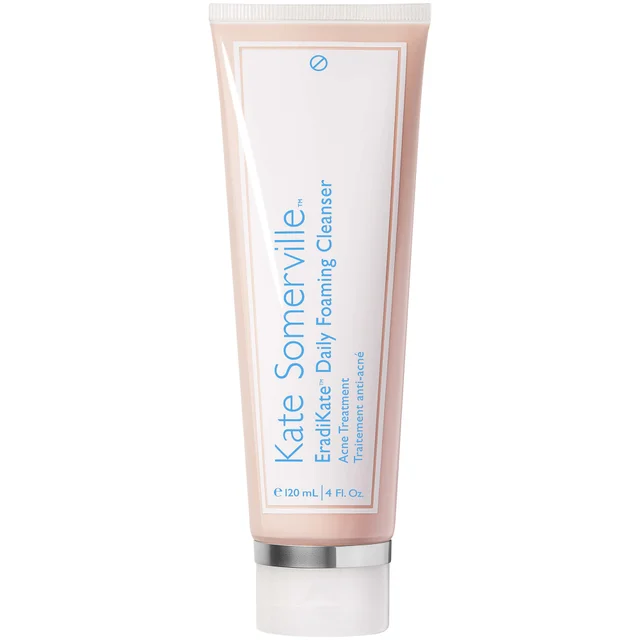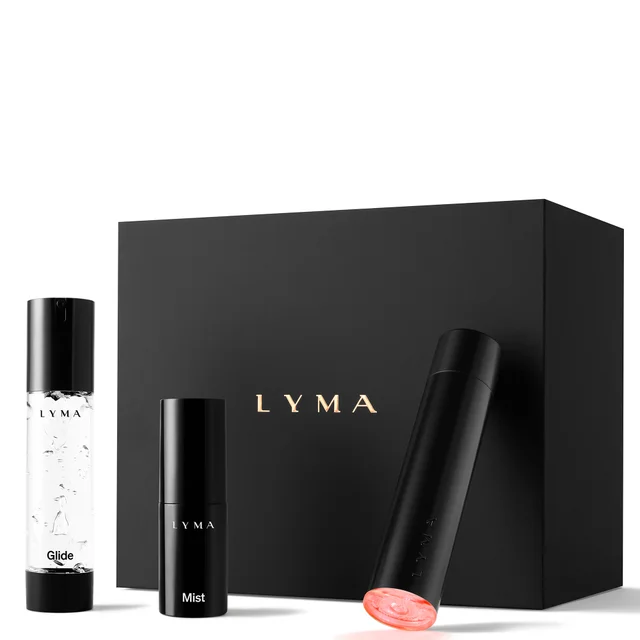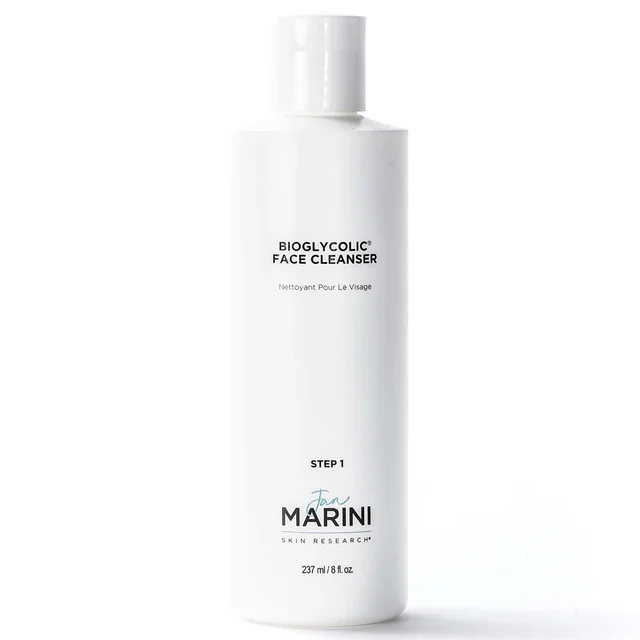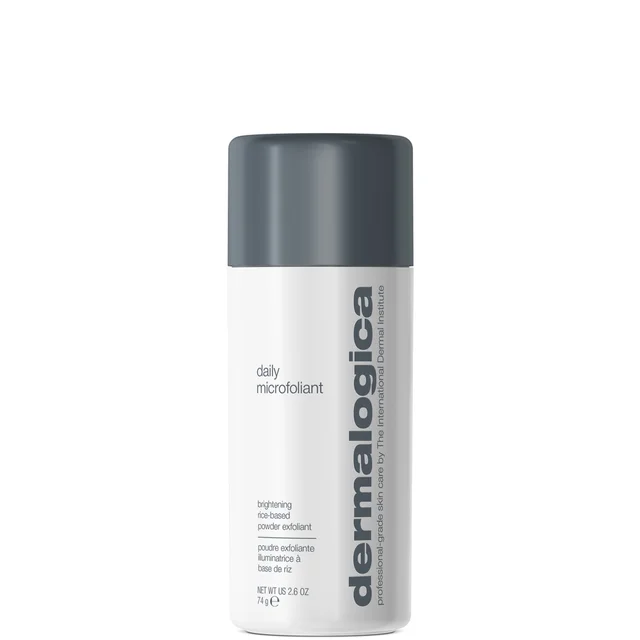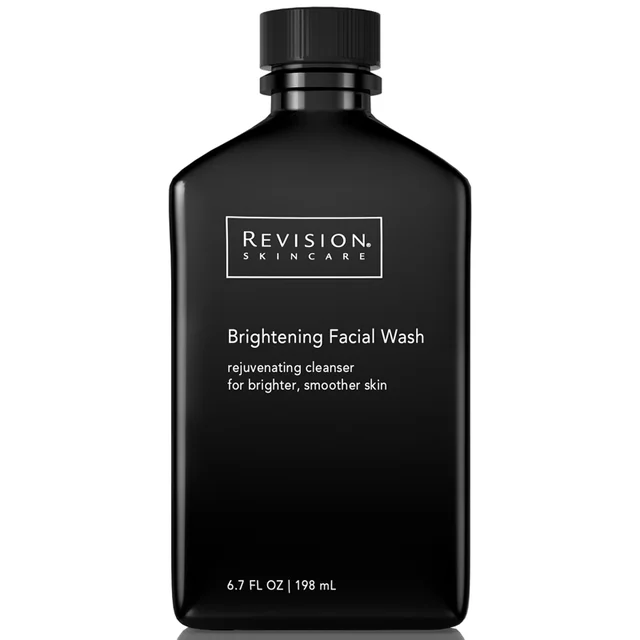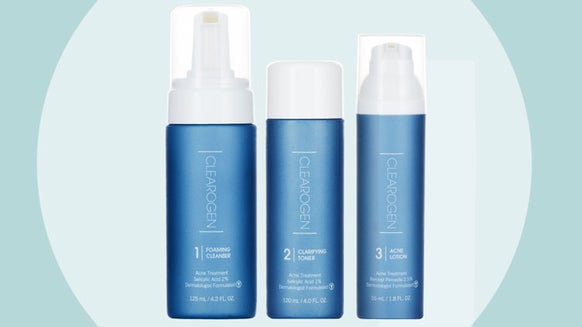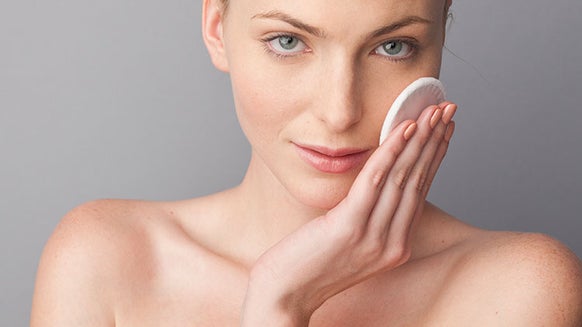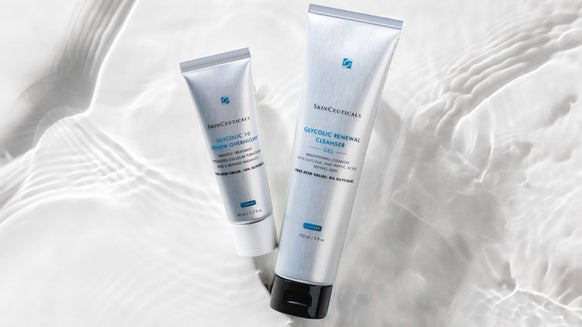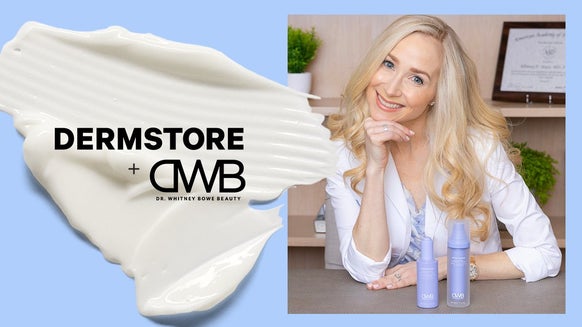How to Treat Cystic Acne, According to a Dermatologist
Any type of acne can be a drag to deal with, but of all the types of acne, cystic acne is the most severe and the most painful. Often more painful than whiteheads, blackheads, and papules, eliminating cystic acne from the skin once and for all is a challenge. Usually, medication needs to be prescribed by a dermatologist to shrink these deep cysts to their maximum potential. Still, when it comes to how to treat cystic acne at home, the right skincare products can make all the difference. Even though navigating the world of cystic acne can be tricky, devising a plan of attack with your doctor is critical if you want to treat it once and for all.
Meet the Expert
- Dr. Connie Yang - Board-certified dermatologist and member of Dermstore's Medical Advisory Board
What is Cystic Acne
Cystic acne is an inflammatory type of severe acne that occurs when dead skin cells, oil, and bacteria become trapped within the pore. Unlike other types of acne, cystic acne's inflammation is far more severe, causing deep nodules and red, boil-like bumps to surface on the skin. According to board-certified dermatologist Connie Yang, MD, cystic acne presents as large, often painful, inflamed cysts beneath the skin. "These cysts are typically larger than your average pimples and often sit deeper in the skin without coming to a head. They can be slightly tender, take longer to heal, and leave scars if not properly treated."
Cystic acne breakouts are not as isolated as they are with more traditional pimples. Instead, this long-lasting type of acne reaches deep within the skin, affecting a larger area and usually leaving behind scars. The face is prime real estate for cystic acne due to the amount of oil glands there, but cystic acne can also occur on the back, chest, shoulders, neck, and butt. Anyone can develop cystic acne, but it is more common in those with oily skin, as well as teenagers and adults with hormonal imbalances.
What Does Cystic Acne Look Like?
Cystic acne generally causes the affected areas and the surrounding skin to appear red or pink and is accompanied by large, raised cysts that resemble a boil. The acne can have a white or yellow, pus-filled bump in the middle, or it may be void of one. Overall, the skin is tender and inflamed, and there may be evidence of acne scars where previous cystic acne lesions once existed.
Causes of Cystic Acne
The exact cause of cystic acne formation isn't well understood, but the basics of what causes any acne to develop apply to cystic acne, too. Dr. Yang says that other causes of cystic acne include hormones, genetics, excess oil production, and bacteria. However, the amount of inflammation in the skin tends to be much higher than that of other types of acne. Medical conditions like polycystic ovary syndrome (PCOS) are also thought to be a reason for the formation of cystic acne.
Ingredients to Look for in Cystic Acne Products
"The most effective treatment for cystic acne includes prescription medications to address the root of the problem. Long-term treatments include oral and topical prescription medications," says Dr. Yang. However, good skincare products that target acne are also part of the solution. "Ingredients like benzoyl peroxide and sulfur can help decrease inflammation and shrink the size of the cystic lesions, especially for more superficial ones, since they help decrease inflammation. Hydrocolloid pimple patches can also help them heal, as can in-office procedures, like cortisone injections, which are more of a quick fix. However, topical products often can't penetrate deep enough to target these cystic lesions underneath the skin fully."
Commonly recommended ingredients that can improve cystic acne include the following:
Salicylic acid: This chemical exfoliating agent targets excess oil and unclogs the pores by removing dead skin cells Benzoyl peroxide: Good for reducing acne-related bacteria, benzoyl peroxide also decreases inflammation within the skin Adapalene: Part of the retinol family, adapalene, which was once only available via prescription, effectively reduces inflammation while increasing cell turnover to keep the pores clear Alpha hydroxy acids: Glycolic and lactic acids can improve cystic acne by reducing inflammation and removing dead skin cells while also decreasing the appearance of acne scars by stimulating new skin cell growth Sulfur: This time-tested anti-acne ingredient works like benzoyl peroxide and salicylic acid to clear out clogged pores and cut down on oil production Azelaic acid: A go-to for rosacea-prone skin, azelaic acid is also beneficial for acneic skin due to its antibacterial and anti-inflammatory properties. It prevents keratin from building up in the pores, which can clog them and lead to acne. Vitamin C: This antioxidant is a well-studies anti-inflammatory known to decrease skin redness and swelling Tea tree oil: Used in conjunction with other acne ingredients, this all-natural blemish buster, which is made from the leaves of the tea tree plant, cuts down on acne-causing bacteria
Shop the Best Cystic Acne Products
1. Kate Somerville Eradikate Cleanser
This clinical-strength acne cleanser is a must-have in any daily acne routine. Packed with sulfur to bust up bacteria, oil, and blackheads, the whipped texture leaves skin soft and smooth but never dried out.
Key ingredients: Sulfur, natural oat extract, honey, rice ban extracts
Skin Types: Acne-Prone
Skin Benefit(s): Eliminates excess oil, reduces active blemishes, helps to soothe and calm the skin
Beauty Insider Tip: Leave the cleanser as a mask on the T-zone for two to three minutes to break down sebaceous filaments and blackheads.
2. Murad Deep Relief Acne Treatment
Thanks to this serious pimple relief treatment, you can get deep, painful acne under control without relying on prescriptions. Powered by salicylic acid, it creates an invisible film on the skin so that the actives penetrate better and deeper into the skin to clear up even the most severe acne.
Key ingredients: Salicylic acid, amino acids, ginger root extract
Skin Types: Oily, Dry, Combination, Acne-Prone
Skin Benefit(s): Reduces skin redness, improves the severity and longevity of breakouts, calms the skin
Beauty Insider Tip: This plant-based treatment clears acne without any of the side effects common to doctor-administered treatments like cortisone shots.
3. La Roche-Posay Effaclar Duo Acne Face Wash with 4% Benzoyl Peroxide
Clear up existing blemishes and prevent new ones from forming with this dual-action cleanser featuring benzoyl peroxide and lipo-hydroxy acid. Not only does this daily face wash remove dirt, oil, and makeup, but it also improves the skin's texture for a renewed complexion.
Key ingredients: Benzoyl peroxide, lipo-hydroxy acid
Skin Types: Oily, Acne-Prone
Skin Benefit(s): Cleanses the skin, removes excess oil and impurities, clears acne blemishes, prevents new acne breakouts, evens and renews skin
Beauty Insider Tip: Use a dime-sized amount of cleanser morning and night for best results.
4. PCA Skin Blemish Control Bar
Send pimples packing with this skin-purifying cleansing bar, which rids the pores of excess oil and softens the skin. When used morning and night, it works hard to reduce existing acne breakouts and prevent the formation of new ones, thanks to 2% salicylic acid.
Key ingredients: Salicylic acid, azelaic acid, eucalyptus leaf oil
Skin Types: Oily, Combination
Skin Benefit(s): Clears existing blemishes, prevents future acne breakouts, purifies the skin, removes impurities, promotes a more even skin tone
Beauty Insider Tip: Use the enclosed sponge, which should not be stored inside the container, to create a foamy lather for a deep-down cleansing experience.
5. SkinCeuticals Blemish and Age Defense Serum
Equally effective in warding off acne and the common signs of aging, this non-comedogenic, oil-free serum works for acne-prone and aging skin without instigating symptoms of one or the other. The more you use the lightweight formula, the clearer the skin will appear with less congestion and improved skin tone coupled with fewer lines and wrinkles—a win-win!
Key ingredients: Dioic acid, lipo-hydroxy acid, salicylic acid, glycolic acid, citric acid
Skin Types: Mature, Acne-prone, Oily
Skin Benefit(s): Improves the look of blemishes, fine lines, and wrinkles, reduces oiliness, unclogs pores, brightens the skin's tone, and softens skin texture
Beauty Insider Tip: When using the serum in the morning, always apply it after an antioxidant serum and before sunscreen.
6. Vichy Normaderm SOS Acne Rescue Spot Corrector
If acne, uneven skin tone, enlarged pores, and dull skin are common skin complaints, this spot corrector deserves a spot in the rotation. Thanks to its lightweight texture that absorbs instantly into the skin, the first targeted acne-spot treatment from Vichy dries up current acne blemishes in both size and severity while keeping the skin clear so new ones don't form. Plus, it soothes the skin, so dryness and irritation are never a worry.
Key ingredients: Sulfur, glycolic acid, niacinamide
Skin Types: Acne-prone, Sensitive
Skin Benefit(s): Dries up and reduces the number and severity of acne blemishes, helps prevent new acne blemishes from forming, absorbs quickly and evenly into the skin
Beauty Insider Tip: Since the spot treatment contains alpha hydroxy acid (AHA), it may increase your skin's sensitivity to the sun, so always use it with sunscreen, wear protective clothing, and limit sun exposure.
7. Obagi Medical Clenziderm MD Therapeutic Lotion
A lightweight lotion developed to treat stubborn acne, the unique formula helps clear up blemishes and problem-prone skin. Thanks to 5% benzoyl peroxide, it whisks away oil and dead skin cells, responsible for causing acne, for clearer skin.
Key ingredients: Benzoyl peroxide
Skin Types: Normal, Oily, Combination, Acne-prone
Skin Benefit(s): Clears up acne, prevents future breakouts, removes oil and dead skin cells
Beauty Insider Tip: Because this product may dry the skin, start with one application daily, then gradually increase to two to three times daily if needed or as directed.
8. Lyma Laser Starter Kit Bundle
Lasers are a staple in every dermatologist's toolbox to tackle stubborn acne, and with this handheld device, you can reap the benefits of clinical-grade cold laser treatment at home. With results in just 30 days with a three-minute daily treatment, breakouts shrink, and pigment from lingering acne fades—all without any pain or downtime.
Key Features: Cold Laser
Skin Types: All skin types
Skin Benefit(s): Transforms the skin on the face, neck, and body, reduces the appearance of breakouts, scars, wrinkles, pigmentation, sagging skin, and rosy skin, works for all skin tones
Beauty Insider Tip: LYMA's laser technology was originally developed in the 1960s and was later re-engineered into a portable, cordless device.
9. Jan Marini Bioglycolic Facial Cleanser
This best-selling gentle glycolic acid cleanser exfoliates the skin and removes dead skin cell buildup that contributes to acne. Thanks to its cleansing effect, this non-foaming cleanser works as a pre-skin prep so that the other steps in your anti-acne routine are enhanced and able to penetrate the skin optimally.
Key Ingredients: Glycolic acid, Sorbitol
Skin Types: Oily, Dry, Normal, Combination
Skin Benefit(s): Deeply cleans the skin, exfoliates the skin's surface, leaves a hydrating effect
Beauty Insider Tip: Since the cleanser contains the right amount of non-stripping glycolic acid, it won't irritate the skin.
10. Dr. Dennis Gross Skincare Drx Spectralite Faceware Pro
This multipurpose, FDA-cleared LED mask can fight acne and wrinkles in just a few minutes. Choose the red light setting for anti-aging benefits and to even out the skin's tone, and the blue light setting to clear up stubborn breakouts.
Key Features: Red light and Blue light
Skin Types: All skin types
Skin Benefit(s): Destroys acne-causing bacteria, clears breakouts and the complexion, smooths out lines and wrinkles, boosts collagen production, firms the skin, improves signs of sun damage
Beauty Insider Tip: After three minutes, the mask automatically shuts off, so there's no need to worry about overtreating the skin.
11. Dermalogica Daily Microfoliant
Exfoliation is a key step in any good anti-acne skincare routine to rid the surface of pore-clogging dead skin cells. This gentle powder-based exfoliator, activated with water, smoothes the skin while brightening, softening, and calming angry skin.
Key Ingredients: Papain, salicylic acid rice bran, white tea, licorice, allantoin
Skin Types: All skin types
Skin Benefit(s): Brightens the skin, provides a smoothing and soothing effect, exfoliates the skin's surface, improves an uneven skin tone, has a calming effect
Beauty Insider Tip: Not all exfoliators are gentle enough to use daily, but this one is thanks to the blend of ingredients.
12. Revision Skincare Brightening Facial Wash
Reach for this skin-rejuvenating cleanser if you want brighter, smoother skin. Perfect for purifying the skin, leaving it clean and hydrated, it also exfoliates away dead surface cells without stripping the skin of its natural moisture—a must for acne-prone skin types.
Key Ingredients: Salicylic acid, glycolic acid, sucrose laurate, vitamins C and E, licorice and lily extracts, white tea extract
Skin Types: Normal, Oily, Combination, Mature
Skin Benefit(s): Brightens the skin, gently exfoliates to remove dead skin cells, improves skin softness and smoothness, provides antioxidant benefits, cleanses by stripping away natural moisture
Beauty Insider Tip: If you are new to using glycolic acid, start by using the cleanser once per day before increasing it to twice daily once the skin has acclimated.
FAQs
How Do You Shrink a Cystic Pimple?
Shrinking a cystic pimple is hard, but it's not impossible if you know what to use and how to do it. According to Dr. Yang, the best way to shrink a cystic acne blemish is to use a targeted spot treatment that contains anti-inflammatory ingredients like sulfur, benzoyl peroxide, and/or salicylic acid. Reducing inflammation and swelling in the pore allows the size of the pimple to shrink and for it to clear up.
Is Cystic Acne Hormonal or Bacterial?
Here's the tricky part of cystic acne: it can be both hormonal and bacterial. Hormonal acne is caused by hormonal imbalances of male-dominant hormones known as androgens. They encourage the sebaceous glands to produce more oils, which can clog the pores and encourage acne-causing bacteria to grow, resulting in acne. Bacterial acne results from an overgrowth of acne-causing bacteria on the skin, leading to inflammation that results in cysts. Dr. Yang says that cystic acne has components of hormonal acne and tends to present as cystic lesions in the lower face. "On the other hand, everyday acne can appear throughout the face, even the chest and back."
Should You Pop Cystic Acne?
As tempting as it may be to try and squeeze and pop a cystic pimple to get it to go away, Dr. Yang says not to do it no matter what. "I never recommend it because popping a cystic acne can lead to increased inflammation, irritation, and even scarring." Instead, follow the course of action described above to reduce a painful pimple
The Bottom Line
Treating cystic acne may feel like an uphill battle, but with the right skincare products and treatments in place, along with the help of your dermatologist, you can clear up the skin and get on track. Remember that cystic acne is the most extreme type of acne, so patience and skin nurturing are important to improve its condition. Trust the process and the experts you enlist to help you, and watch your acne diminish and the health of your skin improve with consistent use of your specially designed skincare program.
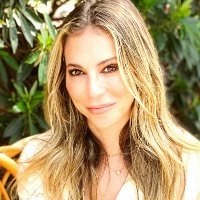
Elise Minton Tabin is an award-winning beauty journalist, editor, and beauty expert with more than 16 years of experience. She previously held the title of Executive Beauty Editor at NewBeauty magazine, where she reported on beauty, plastic surgery, anti-aging, health and wellness. She was also instrumental in the launch of the beauty supplement brand Hush & Hush. A self-professed beauty junkie and retinol and sunscreen pusher, Elise knows what’s new, what works and who’s the best to go for every procedure under the sun. Follow Elise on Facebook, Instagram, and on her beauty blog, elisetabin.com
